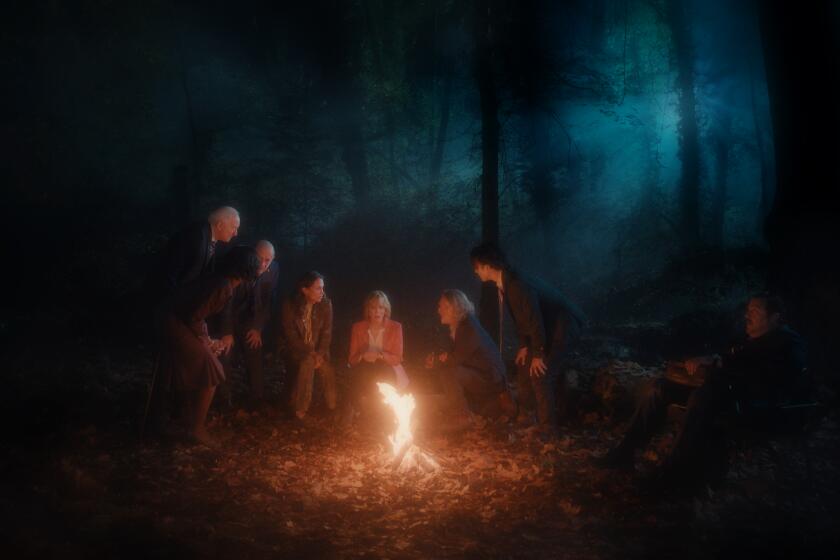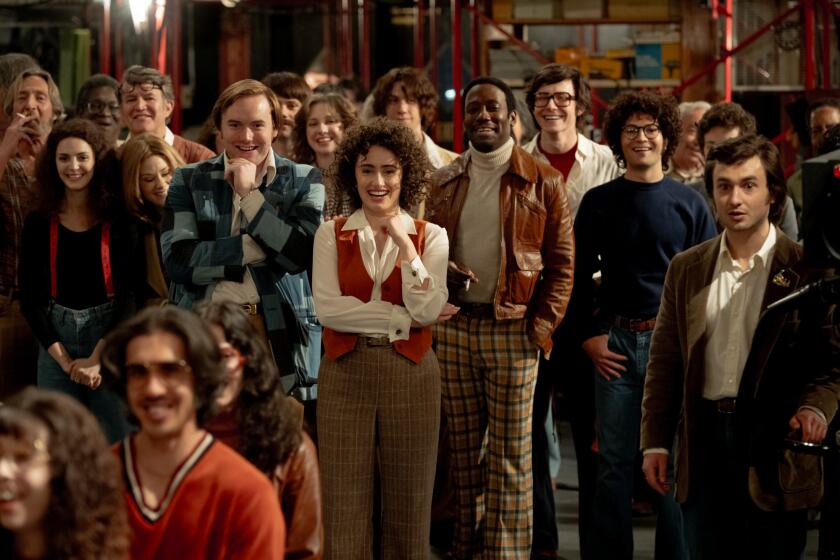A real world of fluid cultures
EARLY in Mira Nair’s smart and sensitive adaptation of “The Namesake,” a character named Ashima pours Rice Krispies into a bowl, sprinkles in peanuts and spices, and digs in. It is the early ‘70s, and Ashima (played by the Indian actress Tabu) has just arrived in New York with her Bengali husband, a doctoral student at Columbia, and is still a stranger to her own cupboards. The image of a recent immigrant gamely taking on the baffling wonders of her adopted country was met with a burst of appreciative laughter at the screening I attended last week.
The scene echoes countless films about the immigrant experience. In the movie, Ashima concocts the mixture on her second day in the United States, the first time she’s left alone in her strange new home. In Jhumpa Lahiri’s novel, however, she is nine months pregnant and trying to improvise a treat she craves from Calcutta. (She also adds lemon juice and a green chili pepper.) The difference between the written scene and the filmed one is that, in the book, she’s intentionally improvising a native dish using nonnative materials, which is the way cultures mix. (The snack, incidentally, prefigures her children.) In the latter, she’s misappropriating a common household item in a way we find amusing (presumably until someone inevitably fills her in on sliced bananas and milk), which is the way immigrants assimilate in the movies. Nair plays the scene for laughs, and it works. I laughed too, even though the enthusiasm with which it was met bugged me.
In order to laugh at Ashima’s snack you have to doubt its legitimacy -- it’s funny because it’s wrong. Without knowing her intention, or the context that produced it, we indulgently, liberally chuckle at her error, admiring it for its exotic color and gentle, Third World pathos. The snack becomes beholden to the eye of a beholder reared on movies like “Moscow on the Hudson” or “Coming to America” or even “The Godfather” trilogy, steeped in a tradition that still harks in spirit to the days of steamer travel, up to his eyeballs in a sepia-tinted narrative about “the immigrant experience.” The beholder, in other words, if his experience of the immigrant experience comes mainly from American movies, may be slightly behind the times.
How this perspective persists, remains entrenched, in an era of globalization, jet travel and advanced fiber optics is a mystery. But “The Namesake,” as one might expect from its provenance and pedigree, takes a different approach. Nair was born in India, educated at Harvard, is based in New York and, since 1989, has lived in Uganda, where she shot the film “Mississippi Masala,” about a displaced Ugandan Indian family that moves to the American South after being expelled from Uganda by Idi Amin. (“The Last King of Scotland” shows glimpses of that diaspora.) Her production company recently established Maisha, a filmmaking lab for screenwriters and directors from East Africa (Uganda, Kenya, Tanzania and Rwanda) and South Asia (India, Pakistan, Sri Lanka and Bangladesh) whose motto is, “If we don’t tell our stories, no one will.”
The sentiment has lately been echoed in the surge of films from around the world that depict contemporary life in all its complexity and flux. For every confused film like “Crash,” there seems to be a “Fast Food Nation.” In Richard Linklater’s movie, the young Mexican workers at a Colorado meatpacking plant talk and behave surprisingly like people from this century. They may be poor, but they’re rich in ironic detachment and a sense of who they are as individuals, and not as delegates from some entrenched cultural stereotype.
As “The Namesake” shifts from Ashima’s perspective to that of her son, Gogol (named after the Russian author), born in New York, it becomes a story about the growing impossibility of parsing people into distinct national, cultural, ethnic and social groups. Gogol goes through life being asked to define himself (and explain his crazy name) against the monolithic abstractions that constantly threaten to obscure his identity.
The movie depicts his American girlfriend’s parents’ friends blithely asking him about his arrival in this country, as though by his accent and demeanor he weren’t immediately recognizable as American. It fails, unfortunately, to include a scene in the book involving a lecture in Cambridge presented by a distant cousin from Bombay, in which Gogol first encounters the term ABCD, or “American-born confused [or conflicted] deshi.”
“ ‘Teleologically speaking,’ ” one of the Harvard panelists says, “ ‘ABCD’s are unable to answer the question, “Where are you from?” ’ “ Teleologically speaking -- that is, taking the view that there are designs, purpose, final causes in nature or history -- a surprising number of movies about the immigrant experience answer it too easily: American, seasoned to taste.
In a different, less personal, less culturally attuned film, Ashima would eventually learn to keep the nuts away from the breakfast cereal, then her assimilation would be complete. She’d remember her roots, of course; she’d “celebrate her cultural heritage” (a phrase that fairly gags on its own overcompensatory chipperness), and if we were hip, we’d celebrate it too -- in yoga studios and restaurants. But over time she’d learn to be an American, which is to say, she’d be free to put whatever in her Kellogg’s, as long as some degree of cultural detachment and awareness was involved.
In the real world
WHAT sets films like “Fast Food Nation” and “The Namesake” apart from other American films -- James L. Brooks’ particularly egregious “Spanglish” springs to mind -- is that they present contemporary cultural porousness as the gradual, fluid process that it is. They recognize that for many immigrants the world they came from remains alive and present (thanks to air travel, cheap phone cards, corner Internet cafes), not left behind in a misty shroud of memory and nostalgic panegyrics to the “old country.” There are no “old countries” anymore.
The most interesting films about migration in the global age suggest that nationality, like sexuality, may be more of a point on a continuum than an absolute and that it’s futile, not to mention contrary to history, to try to parse the Rice Krispies from the peanuts once they’ve come together.
More to Read
Only good movies
Get the Indie Focus newsletter, Mark Olsen's weekly guide to the world of cinema.
You may occasionally receive promotional content from the Los Angeles Times.








